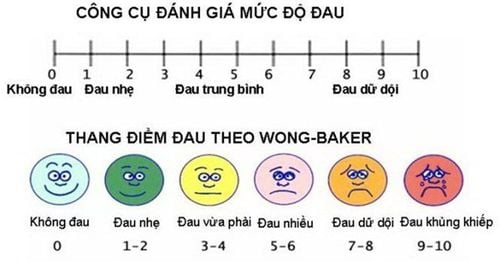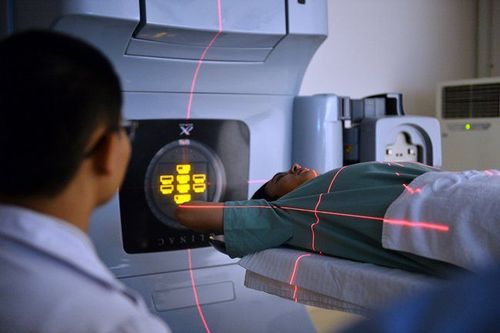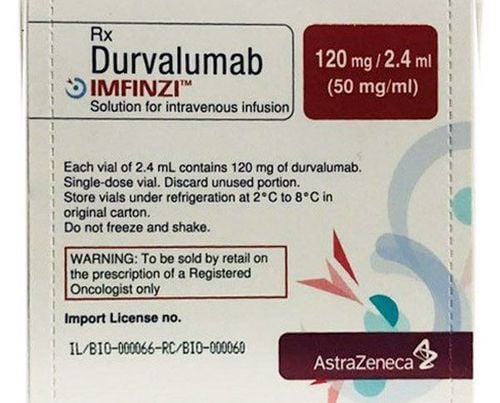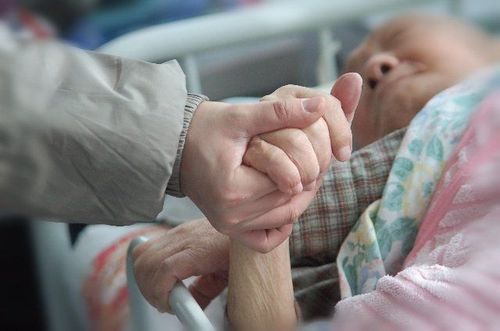This is an automatically translated article.
The article was written by Doctor Bui Hanh Tam - Department of Anesthesia - Pain Relief, Vinmec Times City International Hospital.Pain is a personal experience - a pain that can "torture" one person but may be "just right" for another. Therefore, the way to treat pain is different for each person, in each type of pain, in each stage of the disease, in order to better control symptoms and improve quality of life at any stage of the disease.
Not every intense pain means the tumor is growing
Information about any tissue or nervous system damage in the body is transmitted along sensory nerves to the brain, triggering pain sensations. Cancer pain is no exception.30 – 50% of cancer patients suffer from more than 1 type of pain. Pain is more common in advanced cancer (cancer that has spread or returned after previous treatment). 7 out of 10 patients with advanced cancer have varying degrees of pain.
Many patients, when tormented by severe pain, often assume that the cancer is growing. But the reality is that the level of pain does not always reflect how big the cancer is. A small tumor can still cause extreme pain if it presses on sensory nerves or the spinal cord. In contrast, many patients have no pain, which is because there are no nerves within the tumor.
In some cases, cancer treatments (surgery, radiation, etc.) can trigger or worsen pain, because at this time, the nervous system is restructured from nerve tissue damage in the past. That means, the patient's body does not respond to conventional pain therapies, but needs to be intervened with more intensive pain treatments. But, it must also be noted that effectively treated pain does not mean that the cancer has regressed.
Although pain in cancer is not always related to the tumor, it can still make the disease worse, because it affects the body and emotions of the patient.

Thang đánh giá mức độ chịu đau
Cancer pain treatments at Vinmec
Pain is a personal experience - a pain that may "torture" one person but may be "just right" for another. Therefore, pain treatment for each person is different. A pain treatment regimen is effective for one person, but has no effect on the other, so there is a saying: "The Lord cut her hand by begging her intestines" or "the poor family stepped on thorns. “...Today, along with a deep understanding of the pathophysiology of pain, along with the development of many different pain relief methods (non-pharmacological interventions, interventional analgesic procedures, pharmacotherapy), analgesia), pain and palliative care physicians will have a pain treatment plan tailored to each person in each stage of cancer.
At Vinmec, each specific individual will be assigned the most appropriate treatment regimen for each type of pain, at each stage, in order to better control pain symptoms in a comprehensive way, improve the quality of life of the patient. patient. Each regimen is given with the coordination and discussion of a team of pain doctors, palliative care doctors, surgeons, chemotherapy, radiation therapy, nutritionists....
By , we realize that each cancer patient is an independent individual who needs a separate care. Not only treatment of cancer, but good control of symptoms, including pain, is always a priority at every stage of the disease.
In addition to the use of oral drugs, injections, pain management interventions with the support of modern equipment such as neuro-ultrasound machines, X-ray machines with bright screens, micro-tomography machines, etc. ... will block the pain transmission from the periphery to the brain, helping to reduce pain for the patient.
Especially, for patients with poor response to oral and injectable drugs, intervention with the most modern procedures in the world is the solution applied by Vinmec. For example:
Alcohol or radiofrequency nerve denervation or neurocoagulation to treat pain caused by tumor invasion of peripheral nerves; Canceling the solar plexus in visceral pain in stomach cancer, pancreatic cancer... Canceling the hypogastric plexus in invasive cancers in the pelvic region such as cervical cancer, prostate cancer; Anesthesia of the vertebral plane continuously with pain in the chest, high abdomen; Continuous epidural anesthesia, spinal anesthesia with intramedullary injection chamber for end-stage symptom care and control.... Continuous lumbar plexus anesthesia with pain due to cancer metastasis to lower extremity bone ; Continuous anesthesia with selective nerve block that innervates the respective pain area; Pouring cement to stabilize the spine with metastatic cancer of the spine.

Bệnh nhân ung thư tại Vinmec được đánh giá thường xuyên để có phác đồ điều trị giảm đau phù hợp, hiệu quả
6 important information patients need to provide doctors
For patients, accurately describing pain is extremely important, helping doctors find the cause and plan appropriate treatment. The patient needs to answer the 6 basic questions below as accurately and specifically as possible:How is the pain: like an ant sting, like a knife, like a burn? Where is the pain: in what location, where does it spread? How does the pain come on: gradually or suddenly? What helps relieve pain: massage, changing positions, heat, cold? Frequency of occurrence: continuous, intermittent pain? What medication or treatment has been used for pain? When coming to Vinmec hospital, patients or their loved ones should not hesitate or delay in telling the treating doctor that they or their loved ones are in pain. Many patients and their families are afraid of becoming dependent or addicted to pain medications, so they do not dare to consult a doctor, do not ask for thorough help, do not adhere to appropriate pain treatment, or hide information about the disease. ... All these reasons lead to the pain getting worse and difficult to control.
In fact, the treatment of pain is considered good when the patient does not feel pain while lying down or moving. Pain can be resolved with proper diagnosis and treatment. The sooner treatment is given, the easier it is to achieve effective pain control, improving the quality of life of cancer patients and reducing the burden of caring for their loved ones. This also helps doctors, maximize their working capacity and coordinate with each other to bring the best quality of treatment, the safest for patients.
To learn about pain management methods at Vinmec Times City International Hospital, customers can call Hotline: 0243 9743 556 or register online HERE.













